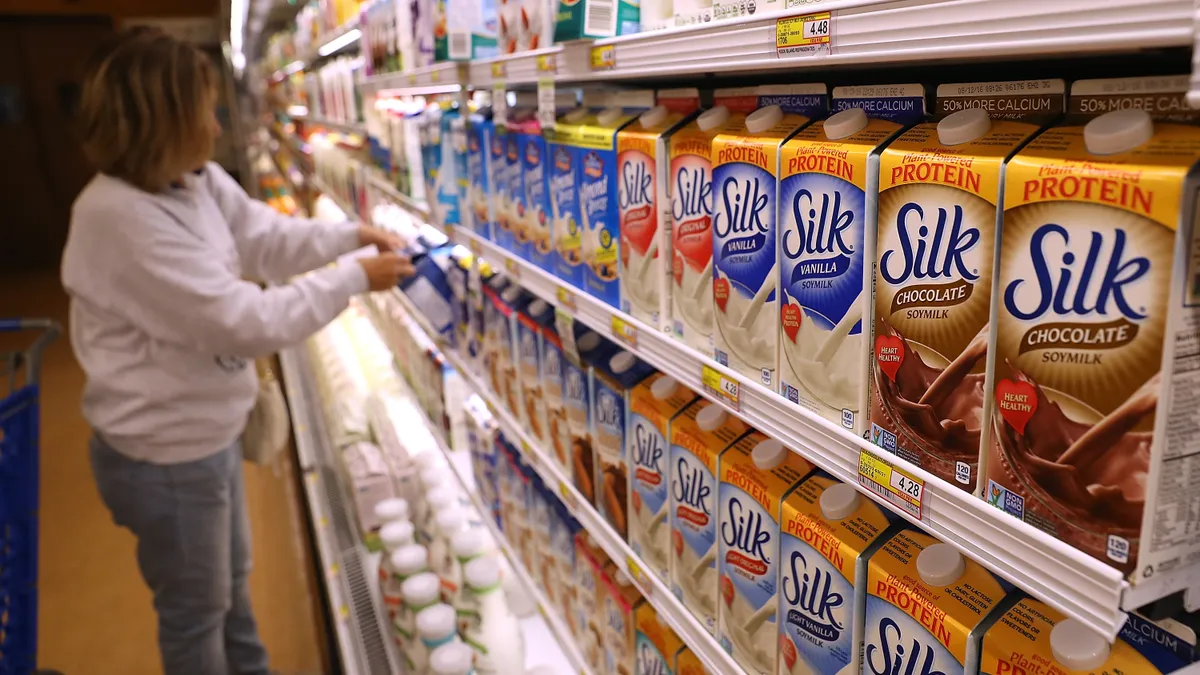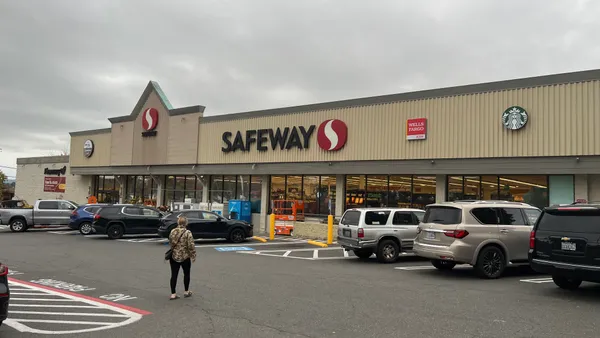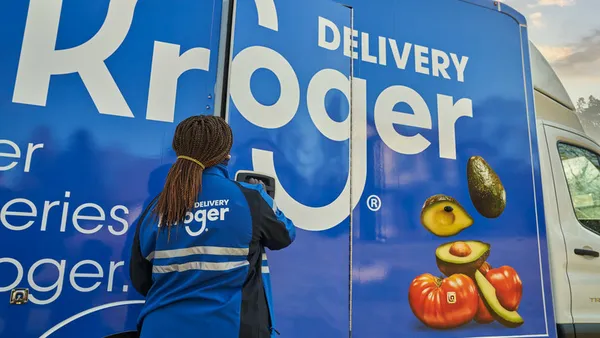Dive Brief:
- Forty percent of consumers surveyed in April are shopping multiple grocery stores to find the lowest prices — up 9% year over year, according to the fourth wave of the Dunnhumby Consumer Trends Tracker released Wednesday.
- The quarterly tracker, which just completed its first year, found in its most recent wave that U.S. consumers believe food-at-home inflation is 15 points higher than the actual 7.1% annual rate recorded in April.
- “Over this year-long study, we have seen a very troubling trend of nearly a third of all Americans and nearly 40% of younger Americans, skipping meals due to financial concerns. And wave after wave, our research has also shown that 18-44-year-olds are at the epicenter of a food and financial insecurity crisis that shows no signs of abating,” Matt O’Grady, president of Americas for Dunnhumby, said in a statement.
Dive Insight:
The financial pressures facing consumers include the reduction of SNAP benefits and ongoing inflation, which has been leveling off yet continues to remain elevated.
“[T]here doesn’t appear to be relief in the short term for many Americans, especially those who are already food and financially insecure,” O’Grady said.
Dunnhumby’s latest report was based on online interviews in April 2023 for the fourth wave of its study, following previous interviews for the other waves in April 2022, July 2022 and November 2022, respectively. The customer data science company interviewed approximately 2,000 people for each wave.
The latest findings from Dunnhumby indicate U.S. consumers, especially younger ones, are feeling impacted by financial pressures.
Sixty-two percent of the people surveyed said they would have a hard time paying an unexpected expense of $400, and that percentage jumps to 75% for consumers between the ages of 18 and 44. Meanwhile, 18- to 34-year-olds and 35- to 44-year-olds have the highest rates —38% and 37%, respectively — among age groups when it comes to reporting skipping meals.
Location also appears to be a factor in food and financial insecurities. Oklahoma, Arkansas, Louisiana, Alabama, Tennessee, Georgia and West Virginia have the highest rates of food (36%) and financial insecurity (70%) in the U.S., and these Southern states also have the highest proportion of children at home compared to other geographic regions, Dunnhumby noted.
These pressures are impacting grocery shopping behavior.
As consumers seek out deals, more are turning to multi-store shopping to find lower prices. Forty-one percent are shopping around to get all the products they need — up 5% from the third wave of the study and up 6% year-over-year. Categories consumers are most willing to shop around for include non-alcoholic beverages (60%), packaged foods (55%) and frozen food (54%), per the report.
Omnichannel shopping is also helping consumers optimize their grocery shopping to save money, Dunnhumby noted. The percentage of consumers who say they check prices online before or during a grocery shopping trip has increased by 9% year over year, up to 40%, per the report.
Thirty-seven percent say they now interact with retailer apps — up 7% year-over-year. Apps are consumers’ second-most-preferred method of being contacted by a retailer, behind email. More consumers (28%) say they are ordering groceries online for delivery at least some of the time, up 9% year over year.
O’Grady said that retailers and brands can tap into personalization efforts to better engage consumers as they do more cross-shopping stores for the best prices and increase their omnichannel behavior.
“Those that are able to understand the different needs of their customers and then deliver to them tailored content and offers that provide real value, will be able to drive customer loyalty in a very competitive environment,” said O’Grady.












